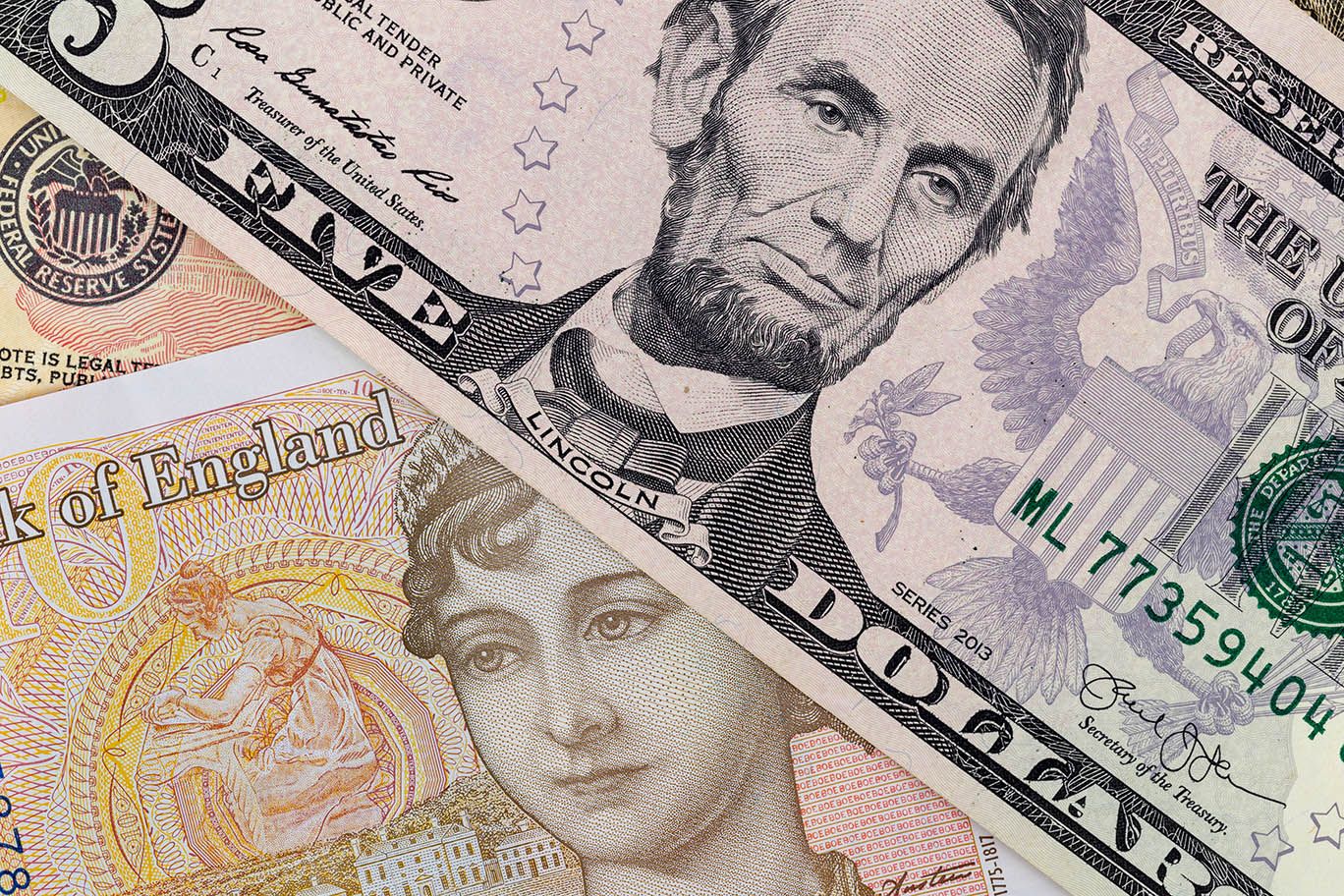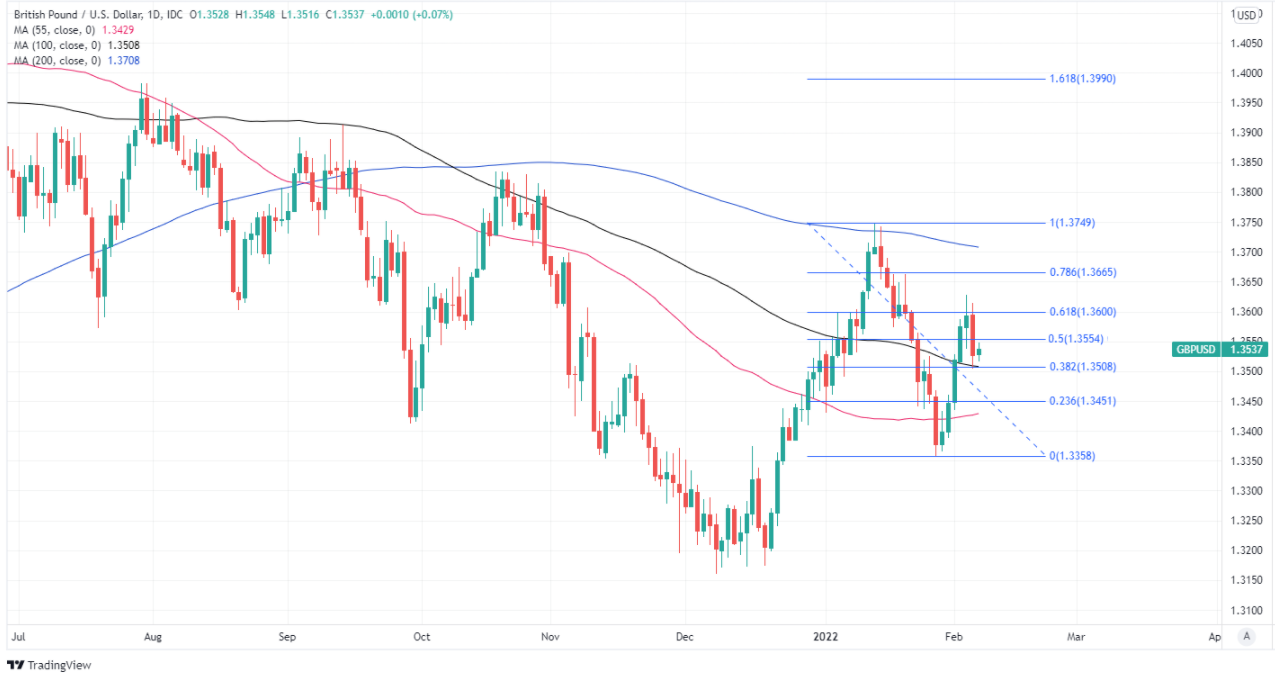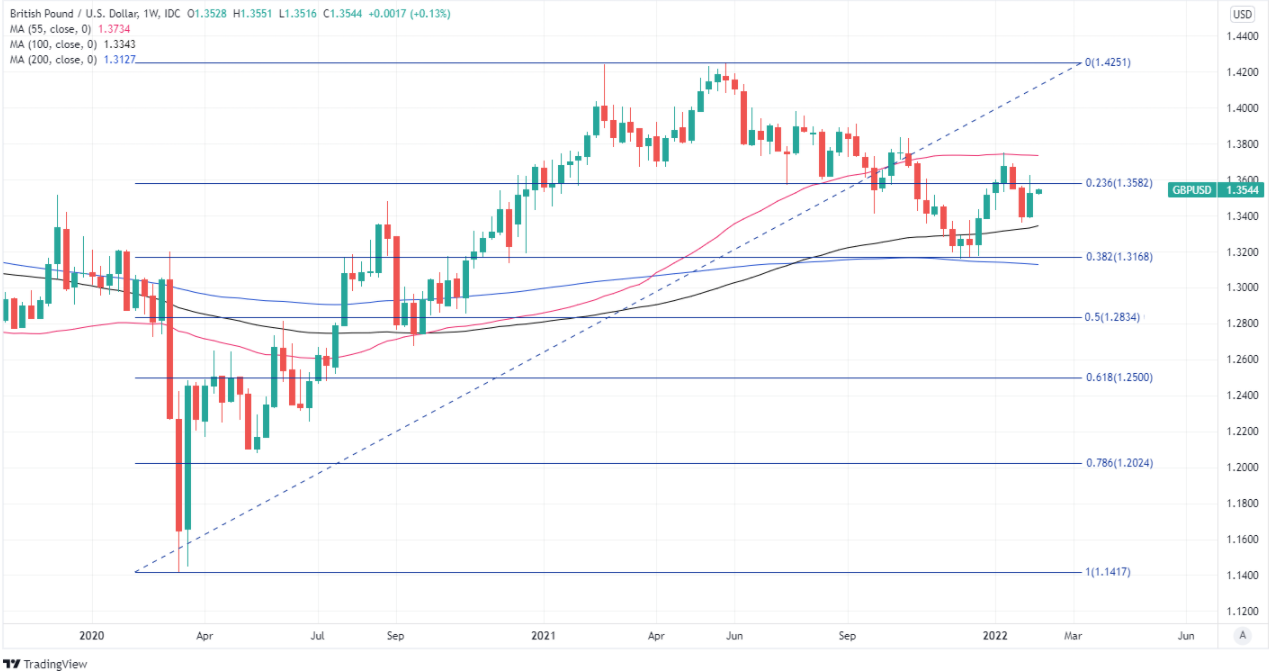Pound / Dollar Week Ahead Forecast: Looking for Foothold as U.S. CPI Data Eyed
- Written by: James Skinner
- GBP/USD looking for foothold near 1.35
- After BoE, U.S. job data prompt setback
- GBP/USD vulnerable on dips below 1.35
- With BoE speeches & U.S. CPI in focus

Image © Adobe Images
The Pound to Dollar rate entered the new week looking for a foothold around 1.35 and the middle of its three-month range following a hefty setback last week, although Sterling would risk further losses over the coming days if the latest U.S. inflation data prompts a continued bid for the Dollar.
Friday’s bumper payrolls report for January brought an end to what had been a week of declines for U.S. exchange rates and left the Pound-Dollar rate clutching for support near its 100-day average just above the 1.35 handle having cut back around half its earlier gain.
But the Pound-Dollar rate’s recovery from late January lows had already stalled previously after the press conference following Thursday’s Bank of England (BoE) monetary policy decision brought the market’s attention to bear on the negative implications of some of its latest forecasts.
“GBP initially rose above the 1.36 level and may have continued to strengthen throughout the day to the mid-figure zone were it not for Bailey’s cautious comments in the press conference that followed the announcement,” says Juan Manuel Herrera, a strategist at Scotiabank.
“The BoE Governor said that it would be a mistake to assume an inevitable march upwards in rates. To us, this indicates that the five or so additional hikes priced in to almost 1.75% by November are out of line. The Bank’s projections suggested as much,” Herrera and colleagues said in a Friday note.
Above: GBP/USD shown at daily intervals with Fibonacci retracements of January decline indicating possible areas of technical resistance for Sterling. 100-day moving-average in black.
- GBP/USD reference rates at publication:
Spot: 1.3520 - High street bank rates (indicative band): 1.3147-1.3240
- Payment specialist rates (indicative band): 1.3408-1.3452
- Find out about specialist rates and service, here
- Set up an exchange rate alert, here
While Thursday’s increase in Bank Rate to 0.50% lifted Sterling, appetite for the currency was later curtailed after Governor Andrew Bailey and colleagues cited recent surges in prices of natural gas and internationally traded goods for a subdued economic growth outlook and implied strongly that market expectations for Bank Rate this year are likely excessive as they would lead inflation to fall below the targeted level in the years ahead.
“Failure to firmly break past 1.36 leaves the GBP at risk of losses toward 1.34 initially and potentially 1.32 in relatively short order. Intermediate support ahead of the 1.35 figure zone is ~1.3525 and the 50-day MA of 1.3512,” Scotiabank’s Herrera and colleagues said on Friday.
The Pound-Dollar rate was quick to stall in the wake of last Thursday’s press conference and will likely pay close attention this week to remarks made by BoE Chief Economist Huw Pill in Wednesday’s online event with the Society of Professional Economists and Governor Andrew Bailey at Thursday’s dinner event hosted by TheCityUK, which are are the highlights of the week for Sterling ahead of this Friday’s UK GDP data.
While economists will look to Friday’s estimate of GDP for December and the final quarter 2021 to understand the impact of November’s emergence of the Omicron strain of the coronavirus on the economy, it’s this Wednesday’s release of inflation figures for January in the U.S. that is likely to be of greater consequence for the Pound-Dollar rate.
{wbamp-hide start}
GBP/USD Forecasts Q2 2023Period: Q2 2023 Onwards |
“The data is unlikely to trigger much volatility given this weakness has already been discounted,” says Lee Hardman, currency analyst at MUFG. “The primary event will be the US CPI data for January. We have not yet hit the peak and further increases in the annual rates of CPI are expected. We may be reaching the point though where strong inflation prints have limited further impact on market pricing.”
U.S. inflation is widely expected to have reached a new high of 7.3% in January while consensus suggests the core inflation rate likely climbed to 5.9%, which is likely to reinforce market expectations for the Federal Reserve to begin lifting its interest rate in March and could potentially prompt a fresh bid for the Dollar if the data surprises on the upside of expectations.
The Fed is widely expected to quickly pull ahead of the Bank of England once it begins to lift the Fed Funds rate, which is one reason why many analysts see the Pound-Dollar rate having only scope to recover only limited amounts of its recently-lost ground in the weeks ahead.
“GBP/USD can consolidate this week. The BoE’s decision to raise the cash rate by 25bp (after debating a 50bp increase) and start quantitative tightening supports GBP. Nevertheless, expectations for FOMC rate hikes will provide some offset to GBP strength. We look to the January high of 1.3747 as a near term resistance level for GBP upside,” says Joseph Capurso, head of international economics at Commonwealth Bank of Australia.
Above: GBP/USD rate at weekly intervals with Fibonacci retracements of 2020 recovery indicating likely areas of technical support for Sterling.







